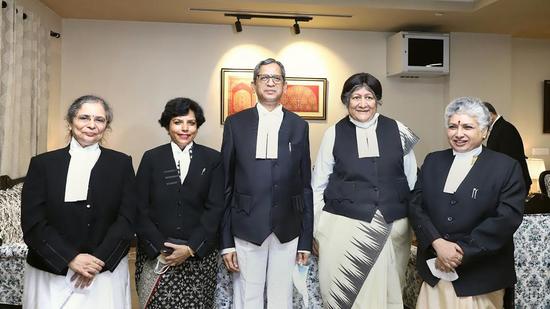In the Supreme Court, representation matters
A world that comprises diverse human beings across religion, caste, gender, class, geography, ideology, cannot be governed by a singular set of upper class, dominant caste, majority religion men
The photograph should be framed in every law school, preserved for history books and written about in inspirational tracts for children.

It’s the one where four women judges — three freshly elevated, one of whom, BV Nagarathna is slated to become our first woman chief justice (CJI) in 2027 though only for 36 days — flank the current CJI, NV Ramana.
Given that it took 39 years to get our first woman Supreme Court (SC) judge, Fathima Beevi in 1989, and 71 years to get eight women judges, the photograph is significant.
Is it picture perfect? Far from it. While it signals the closing of the gender gap in the higher judiciary, the larger issue of diversity remains. Do we have enough representation from among the minorities? Where are the Dalits, Adivasis and LGBTQ judges? “The swearing-in of three women is unprecedented,” says Nikita Sonawane, co-founder, Criminal Justice and Police Accountability Project. “But we still have a long way to go.”
Also Watch | India’s first woman Chief Justice-to-be takes oath along with 8 other SC judges
The photograph tells us that the collegium recognises that men alone cannot continue to rule on crucial constitutional and legal matters. This is welcome course correction and it’s hard to imagine sliding back. One can only hope representation will expand in the years to come.
The photograph also acknowledges a new generation of women who are aspirational, driven and, given the opportunity, as likely to succeed as men. We have just seen it in sport where women have returned from Tokyo with medals.
In the lower judiciary, 36.45% of judges and magistrates are women. Of the candidates who qualified in 2019 for admission to the national law universities, 44% are women. Women don’t lack ambition. They lack support, from physical infrastructure (toilets and day-care facilities) to administrative (sabbaticals) in order to plug the leaking pipeline that lead so many to quit jobs mid-career as their children reach crucial board exam years and parents begin to age.
Why does representation matter? After all, the biological fact of gender doesn’t automatically qualify you as either feminist or misogynist. Male judges have made progressive observations on a range of issues from triple talaq to privacy and adultery. Women judges don’t always root for their gender — it was a woman judge who acquitted a 39-year-old man of POCSO charges because there was no “skin-to-skin” contact. Former CJI Ranjan Gogoi was absolved of sexual harassment charges by a three-member committee of peers that included two women.
A world that comprises diverse human beings across religion, caste, gender, class, geography, ideology, cannot be governed by a singular set of upper class, dominant caste, majority religion men. It’s the multitude of voices that make democracy vibrant. This needs to be reflected in all its institutions, including Parliament and the media.
The photograph signals that moment when the SC finally set right a traditional omission. And for that reason alone, it is historic.
Namita Bhandare writes on gender
The views expressed are personal
Continue reading with HT Premium Subscription





